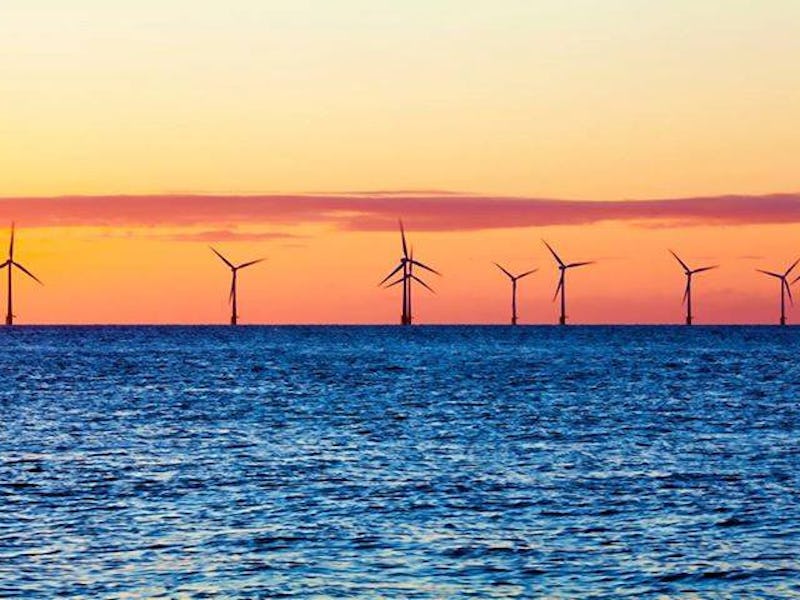This Planned Offshore Wind Farm Will Be a Boon for Sea Life and New Yorkers
Some species are happy as clams on artificial offshore habitats.

New York State has set aside 127 square miles of sea floor for offshore wind farm development, the Bureau of Ocean Energy Management announced Wednesday. The block of ocean, located 11 nautical miles south of Long Beach, may one day be home to a 350-700 megawatt wind farm, proposed by the New York Power Authority.
Friends of alternative energy and fossil fuel foes will cheer this news, sure, but all sorts of marine life should be clapping fins and wagging tails in approval. Here’s why — there’s mounting evidence that artificial structures at sea provide habitat and shelter for marine life like invertebrates, algae, and fish — and this in turn creates a hunting ground for larger predators, including seals and sharks.
One recent study tracked seal populations near wind farms off the coast of Germany and the United Kingdom, and found something rather surprising. Some of the animals were cruising the region in a grid pattern — traveling from one turbine to the next in search of prey and forage.
All of this should be taken with the usual scientific caveats — that research is still in early stages, that we still know little about long term effects, that there are bound to be winners and losers in these new artificial environments. And of course during the construction of wind farms the costs to the environment outweigh the benefits, as traffic and noise disturb whatever creatures happen to be in the area. But in the long run, it’s nice to think that marine life will at least have another option, somewhere to go that is less polluted and crowded out by humans than natural coastal environments.
See, wind farms don’t just create new ecosystems, they create new protected ecosystems. Regions that are reserved for wind farm development are generally excluded from other uses, including transport, recreation, and fishing. That means that whatever creatures set up shop there will likely remain relatively undisturbed. It might be enough to draw resident sharks away from Long Island beaches.
Obviously the havoc that humans wreak on coral reefs and other coastal environments is a big problem, and one that won’t be solved by any one action alone. But it’s comforting to imagine that wind farms might be part of the solution twice over — once by decreasing reliance on fossil fuels and twice by offering new habitats to certain sea critters.
And about the wind farm: It will be the eleventh commercial wind energy lease off the Atlantic coast. Others include two leases off New Jersey, two in off the shore of Rhode Island-Massachusetts, three off Massachusetts, one off Delaware, two off Maryland, and one offshore Virginia.
“This is a great day for New York, and our country as we continue to diversify our nation’s energy portfolio,” BOEM Director Abigail Ross Hopper said in a statement. “The area is large enough for a large-scale commercial wind project, which could make substantial contributions to the region’s energy supply and assist local and state governments — including New York City — in achieving their renewable energy goals.”